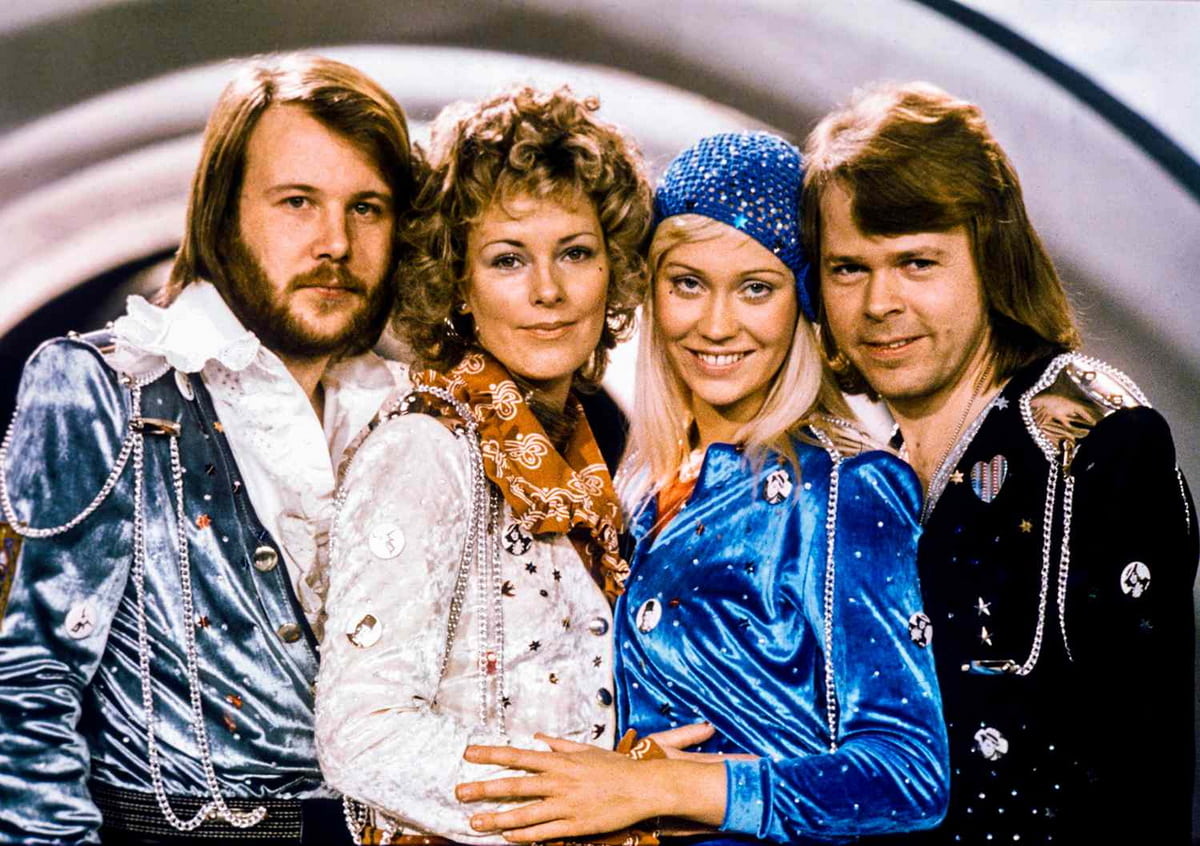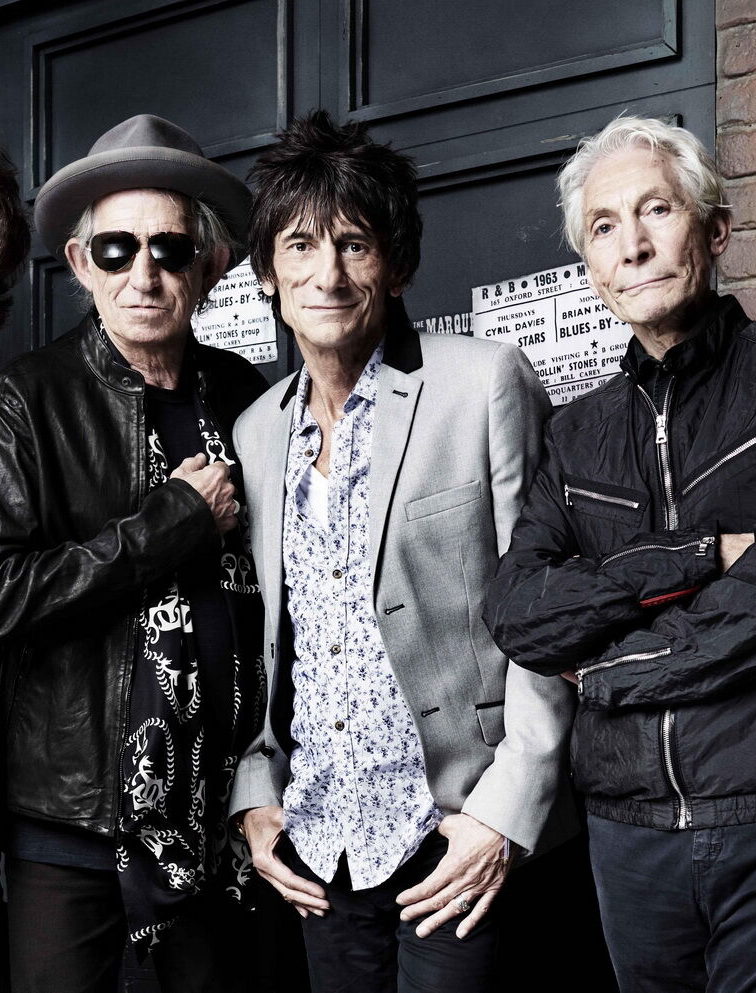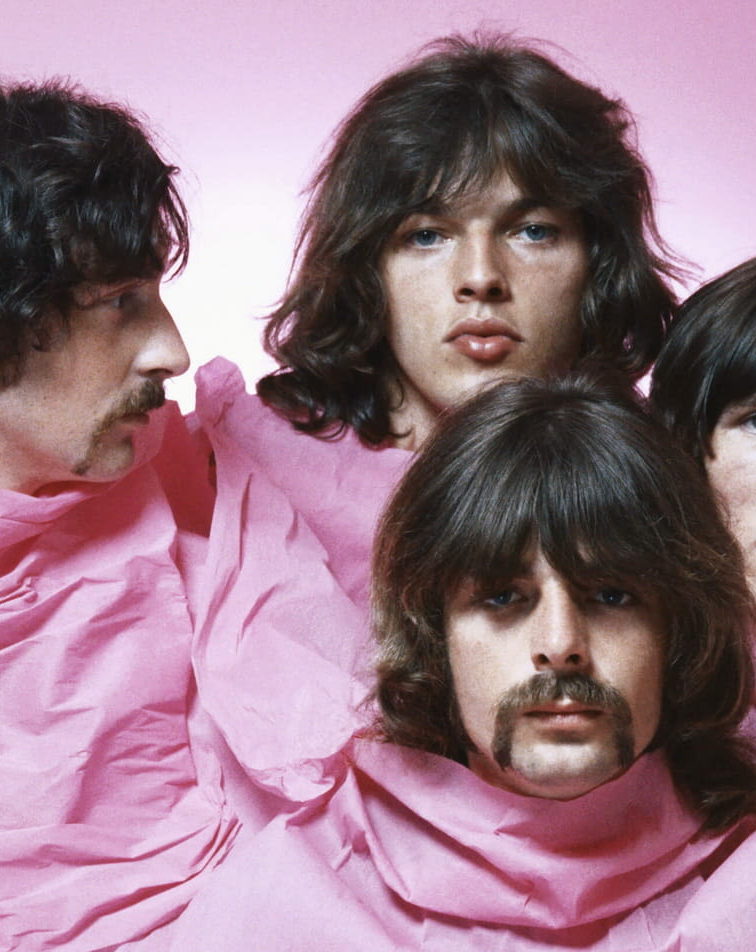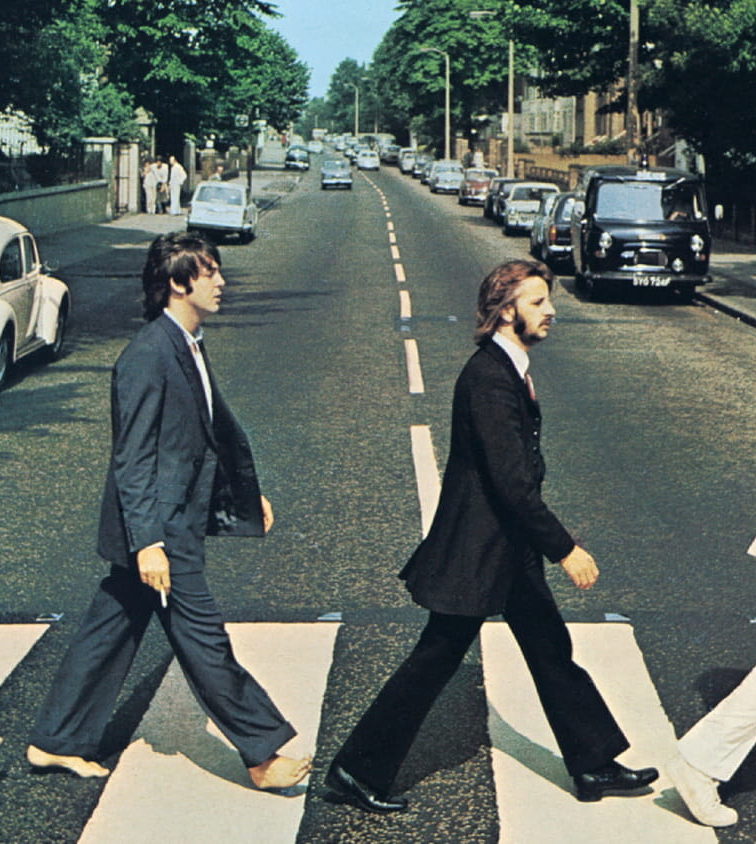Imagine delving into the shimmering world of ABBA, where glittering stage costumes were not just a fashion statement but a savvy tax maneuver, and where music transcends boundaries to unite rock legends and pop icons in unexpected camaraderie. Picture a song so poignant it moves a band member to tears even before its completion, and envision the curious twist of fate where legal battles protect the integrity of a chorus.
These intriguing snippets barely scratch the surface of the rich backdrop that defines ABBA’s storied existence. For an exploration into these and more, delve into the intriguing fun facts about ABBA, a treasure trove of stories waiting to unfold.
1. ABBA’s Formation Name: From a Contest to a Global Phenomenon
Image: mavink.com
The iconic pop group ABBA, known for their catchy tunes and distinctive style, derived their name from an unusual source. Initially struggling with a cumbersome name, “Björn & Benny, Agnetha & Anni-Frid,” the Swedish media grew frustrated. This led to a creative solution: a newspaper contest. The winning entry was a masterstroke of simplicity and symmetry, using the first initials of the members’ names—Agnetha, Björn, Benny, and Anni-Frid—to form the acronym and palindrome “ABBA.”
Interestingly, the name ABBA shared its identity with a well-known fish factory. The band needed to seek permission to use the name, which they received with a condition of maintaining the factory’s pride—a task at which they undoubtedly succeeded, marking the beginning of their journey to international stardom.
2. “Hej, gamle man!” – The Prelude to ABBA
“Hej, gamle man!”, translating to “Hey, Old Man!” in English, marks a significant milestone in music history as the first recording to feature the voices of all four members who would later form the iconic band ABBA. This track was part of the 1970 album “Lycka”, a collaborative effort by Björn Ulvaeus and Benny Andersson, showcasing the early inklings of ABBA’s future success.
While the album predominantly highlighted Björn’s lead vocals and was influenced by a mix of rock, folk music, and the era’s prominent musical styles, it was “Hej, gamle man!” that stood out for incorporating Agnetha Fältskog and Anni-Frid Lyngstad’s backing vocals, effectively uniting the quartet’s voices for the first time.
3. Tax-Deductible Stage Costumes: ABBA’s Ingenious Fashion Strategy

Image: Pinterest
ABBA, the Swedish supergroup, is as famous for their catchy tunes as they are for their flamboyant stage outfits. These iconic costumes were not just a fashion statement but also a clever financial maneuver, tailored to comply with Swedish tax laws of the time. According to these laws, the cost of outfits that were so outlandish they couldn’t be worn as streetwear could be deducted from the band’s taxes. This led to the creation of some of the most memorable and extravagant costumes in pop history.
The mastermind behind many of ABBA’s outfits was Owe Sandström, a zoologist by day and a costume designer by night. His designs were inspired by everything from Scandinavian northern lights to Latin boleros, contributing significantly to the band’s visual and cultural impact. Despite their success, band member Björn Ulvaeus later reflected on the group’s appearance with humor, acknowledging that their unique fashion choices were largely driven by the desire to maximize tax deductions.
These costumes, while a product of financial strategy, became emblematic of ABBA’s brand, contributing to their enduring appeal and leaving a lasting legacy in both music and fashion.
4. Australia’s Favorite: “Fernando”
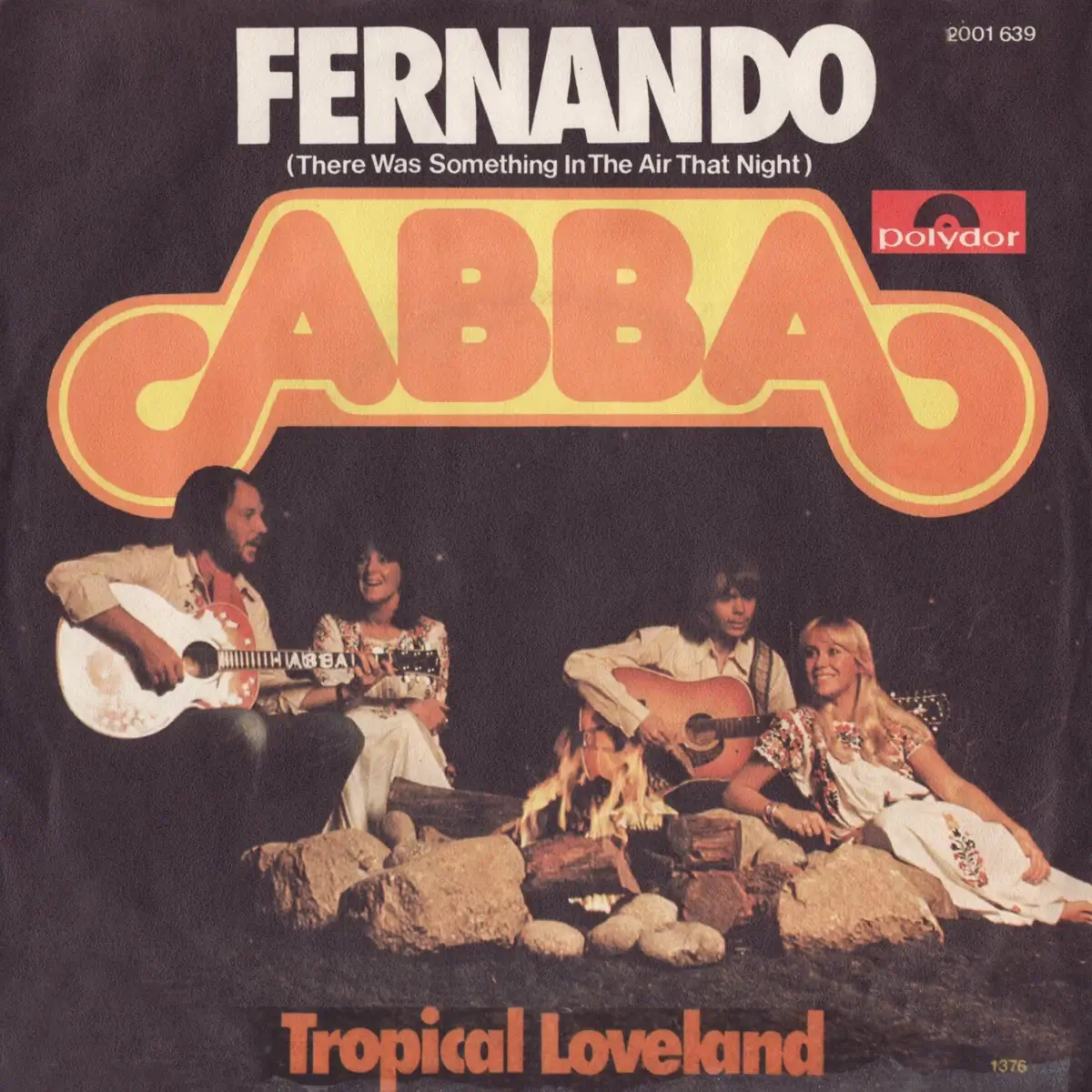
Image: cover.box3.net
“Fernando” by ABBA is not just a song; it’s a historic milestone in Australia’s music scene. Released in March 1976, this melodic tale of nostalgia and reminiscence became ABBA’s longest-running No. 1 hit in Australia, dominating the charts for an impressive 14 weeks. This record stood as the longest for over 40 years, highlighting the song’s unparalleled appeal down under. With over 10 million copies sold worldwide, “Fernando” wasn’t just a hit; it was a phenomenon that topped charts in at least 13 countries, including Austria, Belgium, France, the UK, and more.
The song’s enduring popularity is a testament to its universal themes and ABBA’s genius in crafting songs that resonate across different cultures. The English version of “Fernando,” with its lyrics by Björn Ulvaeus, presents a nostalgic look back at two veterans from the Mexican Revolution, sharing their memories under the stars. This contrasted with the original Swedish version’s focus on personal heartbreak, showcasing ABBA’s versatility and depth in songwriting.
ABBA’s success in Australia was unmatched, with “Fernando” becoming the nation’s highest-selling single before 1997. Its legacy extends beyond the charts, as it remains an airplay staple and a beloved classic. “Fernando” also garnered international acclaim, winning the title of “Best Studio Recording of 1975,” marking ABBA’s first international prize.
5. Paid in Oil Commodities by Russia – ABBA’s Compensation from the Soviet Union
In the late 1970s, during a period marked by Cold War tensions and economic restrictions, ABBA found themselves at the center of a unique financial arrangement. As Western music’s popularity surged within the Soviet Union, traditional monetary transactions faced significant hurdles due to international sanctions and the non-convertibility of the Soviet ruble.
ABBA, whose music had captivated audiences worldwide, including those behind the Iron Curtain, navigated these challenges in an unconventional manner. Instead of receiving royalties in the standard currency, ABBA was compensated with oil commodities by the Soviet Union.
6. “One of Us” as Last UK Top 10 Hit
“One of Us”, released amidst the emotional aftermath of ABBA’s internal divorces, became the poignant swan song of the band’s illustrious chart presence in the United Kingdom. Peaking at No. 3 in December 1981, it held its ground in the top ranks for three weeks, marking a significant moment in music history.
This song not only underscored the band’s ability to capture the complexities of personal turmoil in their music but also became their farewell to the UK’s top 10 hits, a position they would not revisit for nearly four decades.
7. TV Special More Popular than Moon Landing in Australia
In an unparalleled testament to their immense popularity, ABBA’s 1976 Australian TV special, “The Best of ABBA,” captivated audiences to such an extent that it outshone the historic 1969 moon landing in terms of viewership. This phenomenon wasn’t just about the numbers; it underscored the profound cultural impact ABBA had down under, pulling in 58% of the viewing public.
Filmed over two days in March 1976, the special featured a mix of performances and segments that showcased the Swedish group’s charm and musical prowess, leaving an indelible mark on Australian pop culture.
8. Eurovision Victory and UK’s Zero Points
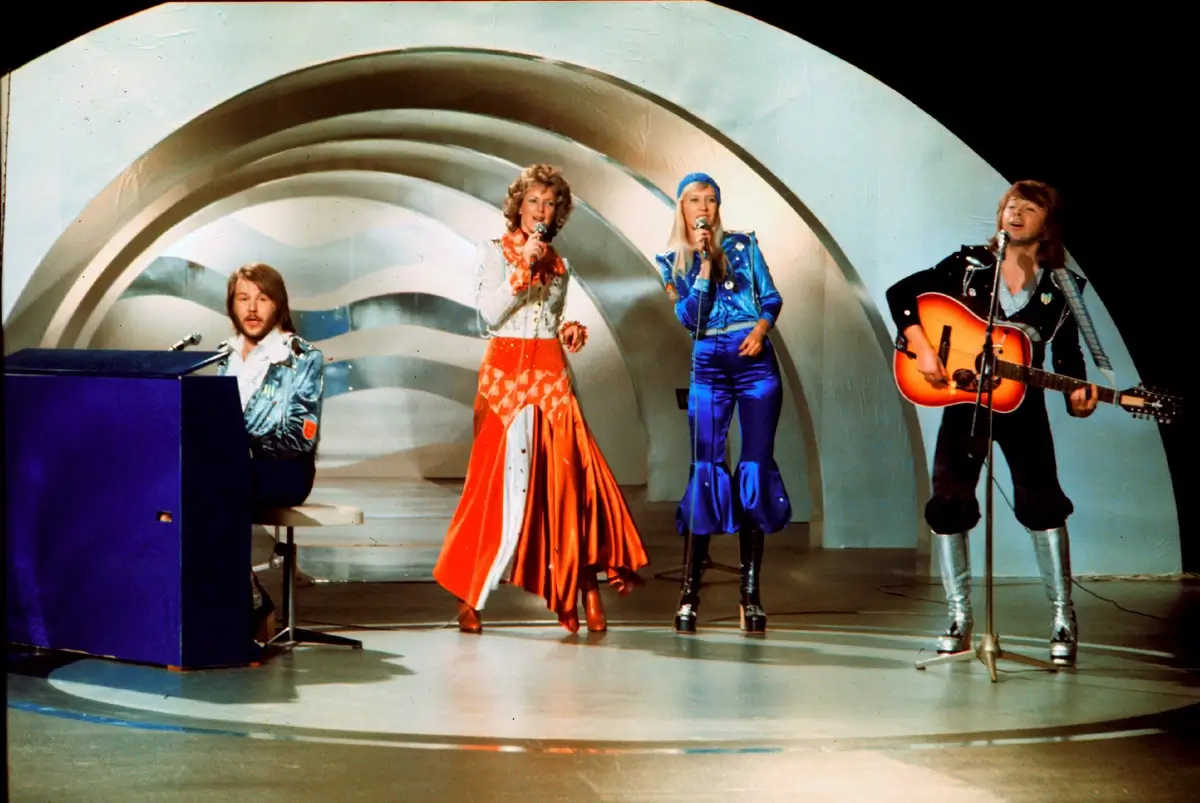
The ABBA group on Eurovision, 1974. Image: bbc.com
In the grand spectacle of the 1974 Eurovision Song Contest held at the Brighton Dome, ABBA’s “Waterloo” not only clinched the victory for Sweden but also marked a turning point in the band’s career. With a total of 24 points, ABBA outshone their competitors, yet interestingly, they received zero points from the host country, the UK. This outcome was particularly surprising given the UK’s historical engagement with the contest and its contestants.
The reason behind the UK’s decision to award ABBA zero points has been a subject of speculation and intrigue. Björn Ulvaeus, ABBA’s member, revealed in an interview that the UK’s decision might have been strategic, aimed at boosting their own entry’s chances of winning. Olivia Newton-John, representing the UK with her song “Long Live Love,” was considered a strong contender for the title. The UK jurors perhaps saw ABBA’s catchy and now-iconic tune as a significant threat to their victory.
9. ABBA Compared to The Beatles: The Swedish Pop Phenomenon
After their victory at the Eurovision Song Contest in 1974 with the hit “Waterloo,” ABBA’s international career skyrocketed, earning them the moniker “Swedish Beatles.” This comparison wasn’t just due to their immense popularity; it also reflected the significant influence The Beatles had on ABBA’s music. Bjorn Ulvaeus of ABBA has openly expressed that The Beatles were their “biggest inspiration,” especially during the creation of “Waterloo.”
The intent behind ABBA’s music was to embody the spirit of pure pop, a genre The Beatles had mastered and pushed into the mainstream during the late ’50s and early ’60s. Ulvaeus highlighted the ambition within ABBA to emulate that level of pop group success, aiming to produce music that resonated on a global scale, much like their predecessors.
10. Reunion After Decades

ABBA members together on stage during their 2016 reunion performance. Image: metro.co.uk
In an event that fans around the world had been eagerly anticipating, ABBA, the iconic Swedish pop group, performed together for the first time in decades during a private gala in 2016. This reunion was particularly special as it marked the 50-year songwriting partnership between members Bjorn Ulvaeus and Benny Andersson.
The gala, a celebration of their remarkable journey in music, offered a rare glimpse of the band together again, performing their timeless hits that have captivated generations of fans.
11. Musical Adaptations and Covers
ABBA’s timeless appeal has inspired a plethora of artists across various genres to reimagine their iconic hits, showcasing the band’s enduring influence on global music culture. Erasure’s “Abba-esque” EP in 1992 stands out as a pivotal moment, paying homage with synth-pop renditions that both honor and transform the originals, achieving notable success in charts around the world. Mike Oldfield’s instrumental cover of “Arrival” introduces a unique blend of British folk and progressive rock to ABBA’s melody, demonstrating the instrumental adaptability of ABBA’s compositions.
Sinead O’Connor brought a poignant intimacy to “Chiquitita,” adding emotional depth and a personal touch that diverges from the original’s upbeat tempo. The metal band Ghost transformed “I’m a Marionette” into a haunting narrative, showcasing the song’s versatility and ABBA’s songwriting depth. First Aid Kit’s live performances of “Chiquitita” highlight the sister duo’s harmonious interpretation, lending a folk sentimentality to the pop classic.
Each cover, from the dance-metal energy of Black Ingvars’ “Waterloo” to Portishead’s brooding take on “SOS,” and the indie pop rendition of “Super Trouper” by Camera Obscura, encapsulates the artists’ unique styles while paying respect to ABBA’s original artistry. These adaptations not only celebrate ABBA’s legacy but also illustrate the timeless nature of their music, capable of crossing genres and touching hearts decades after their original release.
12. Post-Disbandment Successes
Following ABBA’s disbandment in 1982, its members ventured into successful solo careers and notable projects. Björn Ulvaeus and Benny Andersson collaborated on the musical “Chess” with Tim Rice, which, despite mixed critical reception, produced hits like “One Night in Bangkok” and enjoyed a successful run in London.
Agnetha Fältskog resumed her solo career, releasing the successful album “Wrap Your Arms Around Me” in 1983, which sold over a million copies globally. Anni-Frid Lyngstad (Frida) worked with Phil Collins on “Something’s Going On,” marking a departure from ABBA’s sound to a more personal and experimental one, with the single “I Know There’s Something Going On” achieving worldwide success.
13. Million-Dollar UNICEF Donations: ABBA’s Charitable Harmony
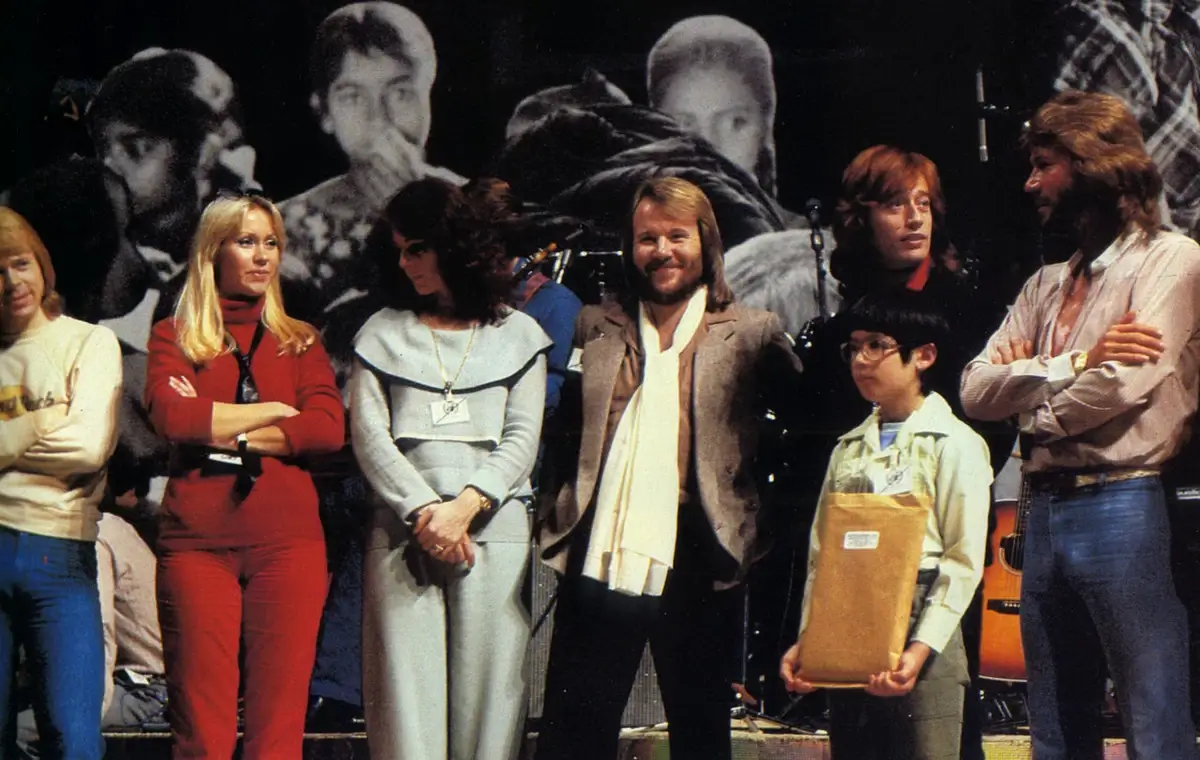
Image: diehardagnetha.com
In a noteworthy demonstration of their philanthropic spirit, the iconic Swedish quartet has transformed their musical legacy into a conduit for change, raising substantial funds for UNICEF. Their commitment, dating back to 1979 with the release of “Chiquitita,” has since amassed $4.8 million, earmarked for UNICEF’s initiatives focusing on children’s welfare and rights.
In 2021, ABBA announced that all royalties from “Little Things,” their Christmas single from the album Voyage, would be donated to UNICEF. This initiative aligns with their ongoing efforts to protect children affected by the pandemic’s socio-economic fallout. The proceeds support UNICEF’s Global Child Protection Fund, aiming to shield girls from violence and uplift them through empowerment programs. Charlotte Petri Gornitzka, Deputy Executive Director of UNICEF, lauded ABBA’s contributions for their potential to foster significant impact, particularly in promoting girls’ empowerment and addressing gender inequality.
14. Love Relationships Within ABBA
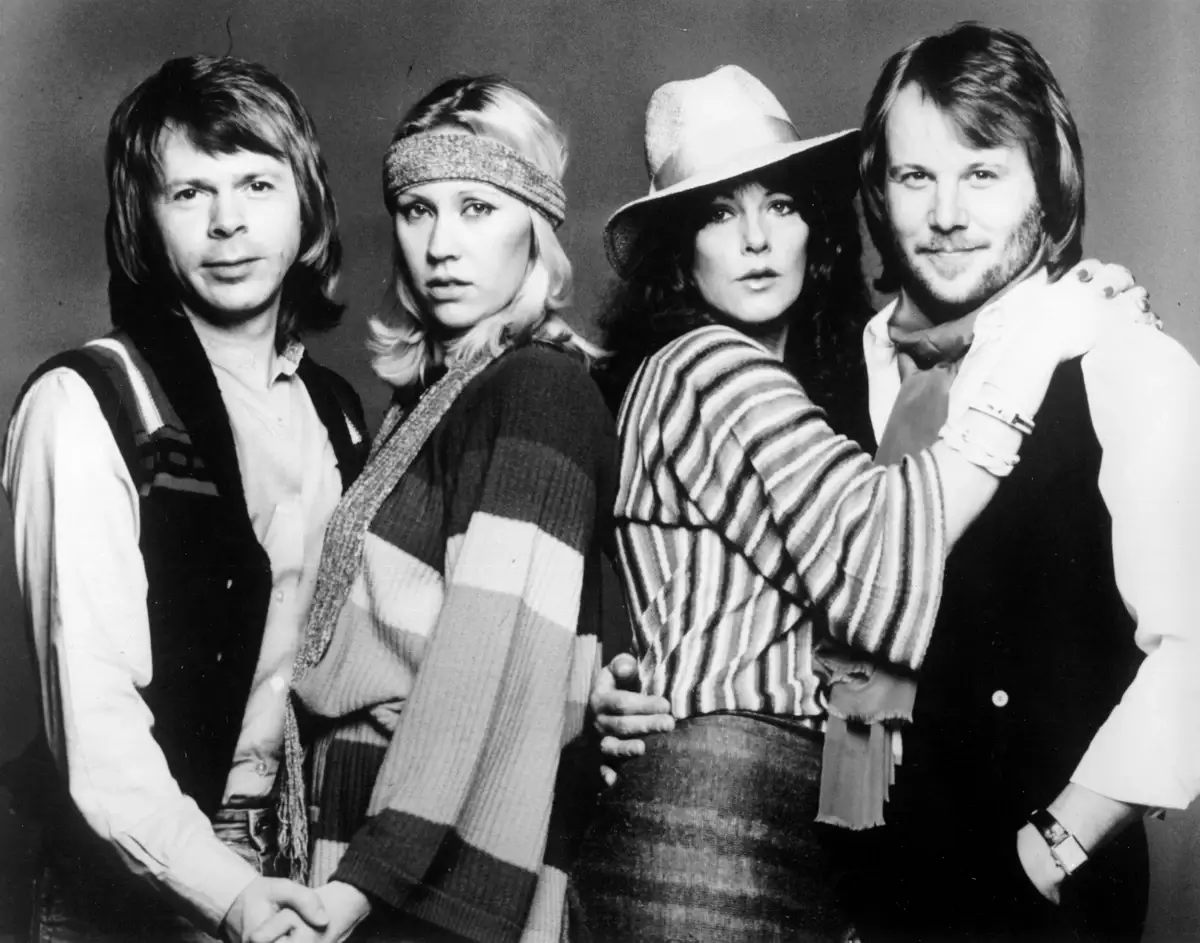
Image: pinimg.com
ABBA, formed in Stockholm in 1972, was not just a musical collaboration but also a weaving together of two couples: Agnetha Fältskog and Björn Ulvaeus, and Anni-Frid Lyngstad and Benny Andersson. Their marriages and subsequent divorces significantly impacted the band’s dynamics and their music.
Agnetha and Björn’s relationship began when they met in 1968, leading to their marriage in 1971. They had two children, Linda (born in 1973) and Peter (born in 1977). However, the pressures of fame and touring took a toll on their relationship, leading to their split in 1979. This separation inspired one of ABBA’s most iconic breakup songs, “The Winner Takes It All,” which Agnetha described as a touching reflection of their marriage’s breakdown.
Benny and Anni-Frid’s relationship followed a similar trajectory. Meeting in 1969 and living together by 1971, they married in 1978 at the peak of ABBA’s fame. However, their marriage lasted only three years, ending in divorce in 1981. This dissolution came quickly after Benny met someone else, leading to his marriage to TV producer Mona Norklit the same year.
The divorces created significant tensions within the group, contributing to ABBA’s eventual disbandment shortly after the breakups. Despite the personal upheavals, the band members managed to remain professionally connected, culminating in a full-fledged reunion and the release of their album “Voyage” in 2021, after decades apart.
15. Chart Success: “Dancing Queen”
ABBA’s “Dancing Queen” not only captured the hearts of millions but also marked a significant milestone in music history with its chart-topping achievements. The song, a splendid concoction of Europop and disco, was recorded over several months, with the initial sessions starting on August 4, 1975. The inspiration for its rhythm came from George McCrae’s “Rock Your Baby,” and the drumming in Dr. John’s 1972 album, “Dr. John’s Gumbo.” An early version of the song even made Anni-Frid Lyngstad, one of ABBA’s lead singers, cry due to its beauty, indicating the band’s anticipation of its success. Despite the internal debates over its release, with “Fernando” being released first, “Dancing Queen” ultimately premiered at a televised gala for the Swedish king and queen, showcasing its royal connection before its official release in August 1976.
“Dancing Queen” soared to No. 1 in over a dozen countries, including ABBA’s native Sweden, where it enjoyed 14 weeks at the top. In the United States, it became ABBA’s only No. 1 hit on the Billboard Hot 100, reaching the pinnacle in April 1977 after a slow and steady climb. This remarkable journey took 18 weeks, showcasing the song’s enduring appeal and ABBA’s international influence. The track also made history by being inducted into the Grammy Hall of Fame in 2015, cementing its legacy as a pop and disco anthem.
16. Musical and Movie Legacy of “Mamma Mia!”
“Mamma Mia!” has transformed ABBA’s music into a timeless narrative, enchanting audiences worldwide through its stage and screen adaptations. Premiering in London in 1999, the musical intertwined ABBA’s hits with a vibrant story of love and identity, captivating more than 60 million viewers across 40 countries. Its success on Broadway further cemented its place in theatrical history, becoming one of the longest-running shows.
The adaptation of “Mamma Mia!” into a film in 2008, featuring stars like Meryl Streep and Amanda Seyfried, brought ABBA’s music to the cinematic forefront, achieving monumental success. The movie’s joyous celebration of ABBA’s songs and its picturesque Greek island setting sparked a renewed interest in ABBA’s music, with ABBA Gold topping charts once again.
17. ABBA Museum Opening

ABBA Museum in Stockholm. Image: swedentips.se
The ABBA Museum, formally known as “ABBA The Museum”, is not just a museum but an interactive journey through the phenomenal pop legacy of ABBA. Established on 7 May 2013 and nestled in the scenic Djurgården area of Stockholm, Sweden, the museum offers fans an immersive experience into the world of ABBA. Owned by Polar Music International, it brings to life the band’s career with a collection of stage outfits, instruments, awards, and more, enabling visitors to explore the significant impact ABBA has had on the music industry and pop culture worldwide.
The inception of this unique museum was rooted in a vision by founders Ulf Westman and Ewa Wigenheim-Westman back in 2006, with aspirations to emulate the success of Beatles-themed museums. Despite initial setbacks and financial hurdles leading to a project abandonment in 2009, the dream was revived in 2012, giving birth to a permanent exhibition space. The museum’s exhibits, including Benny’s Piano and a recreation of the Polar Studio, not only showcase the band’s achievements but also offer interactive audio and video stations for a comprehensive ABBA experience.
FAQ
What is ABBA most known for?
ABBA is renowned as one of the most popular and successful musical groups of all time, celebrated for topping charts worldwide from 1974 to 1982. Their global acclaim began after winning the 1974 Eurovision Song Contest with “Waterloo,” which was voted the best song in the contest’s history during its 50th anniversary. The band’s music, characterized by joyous melodies coupled with melancholic lyrics, has endured in popularity through various revivals and adaptations, including the Mamma Mia! musical and films.
What was ABBA’s first song?
ABBA’s first song was “People Need Love,” recorded in March 1972. This marks the official beginning of the band, consisting of Agnetha Fältskog, Anni-Frid Lyngstad, Björn Ulvaeus, and Benny Andersson.
Why is ABBA called ABBA?
ABBA’s name is an acronym formed from the first letters of each member’s first name: Agnetha Fältskog, Björn Ulvaeus, Benny Andersson, and Anni-Frid Lyngstad, arranged as a palindrome. This naming reflected their collaborative spirit and became a global brand symbolizing pop excellence.
How many of ABBA are still alive?
All four members of ABBA—Agnetha Fältskog, Björn Ulvaeus, Benny Andersson, and Anni-Frid Lyngstad—are still alive and active in various projects, both together and individually, as of the time of writing this article on March 7, 2024. They have recently come together for the “ABBA Voyage” project, a concert residency featuring digital avatars of the band in London. This project marks their first album release in 40 years, titled “Voyage”, which has received critical acclaim and several nominations at the 2023 Grammy Awards.
Why did ABBA break up?
ABBA took a break in 1982 amid personal changes and the members pursuing solo careers. The energy of the group waned as Björn and Benny focused on writing the musical Chess, while Agnetha and Frida revived their solo careers. Though they decided to take a break with the possibility of reuniting in the future, ABBA did not officially reunite as a band for many years.
How many ABBA songs exist?
ABBA released eight studio albums from 1973 to 1981, contributing to a vast catalog of songs that resonate with fans worldwide. The exact number of songs exceeds 100, including studio albums, singles, and unreleased tracks.
Why is ABBA so unique?
ABBA’s uniqueness lies in their harmonious blend of catchy pop melodies with complex harmonies, innovative production techniques, and a distinctive visual and performance style. Their ability to express joy and melancholy within their music, coupled with pioneering recording techniques and vocal harmonies, set them apart in the music industry.
Where is ABBA most popular?
ABBA achieved worldwide popularity, with significant success in Europe, Australia, and North America. Their music saw enduring success in the UK, among other regions, showcasing their global appeal.
Why did ABBA sing in English?
ABBA chose to sing in English to reach a broader international audience, recognizing English as the lingua franca of the global music industry. This strategic choice helped them achieve worldwide fame beyond their Swedish origins.


